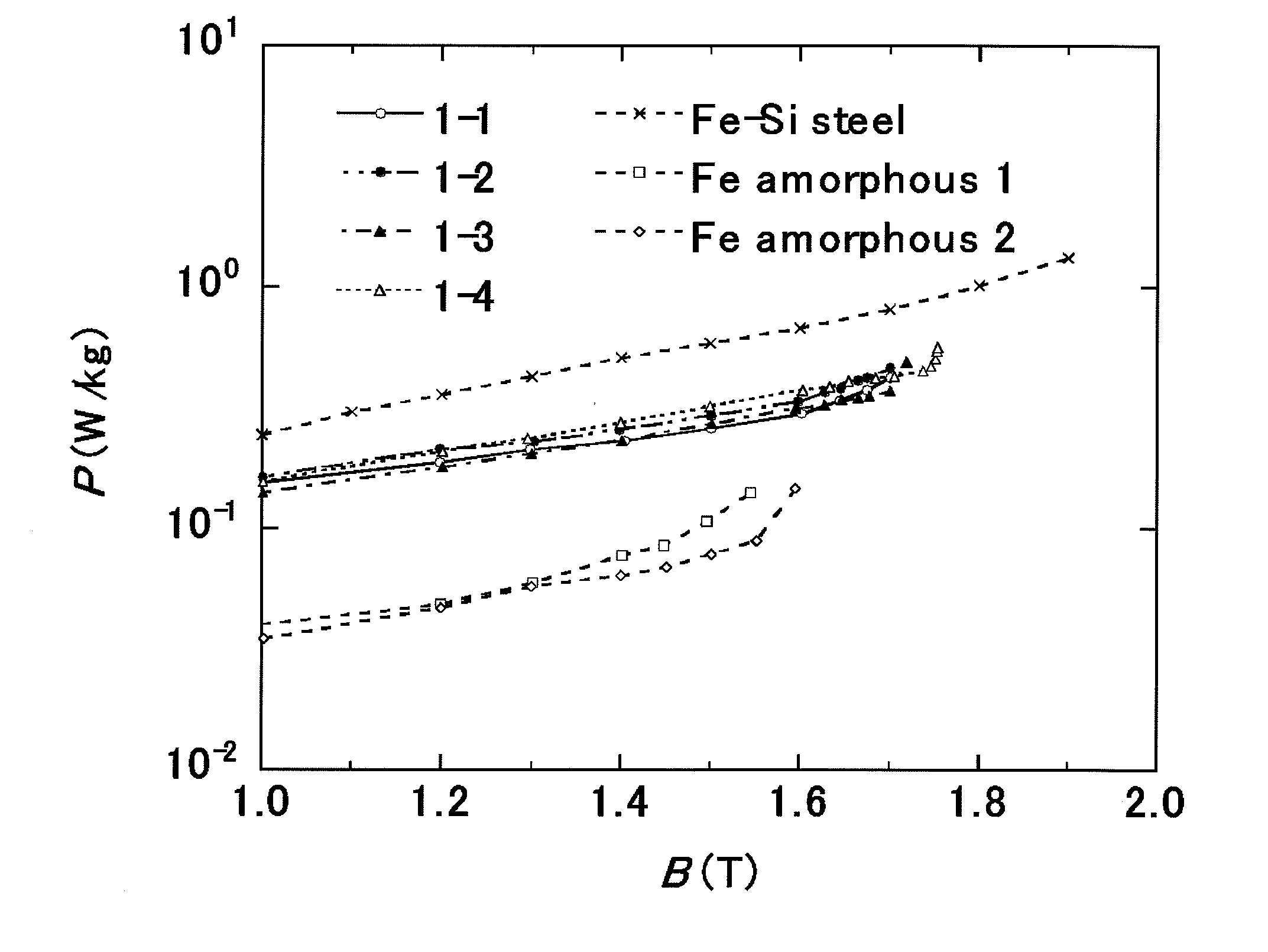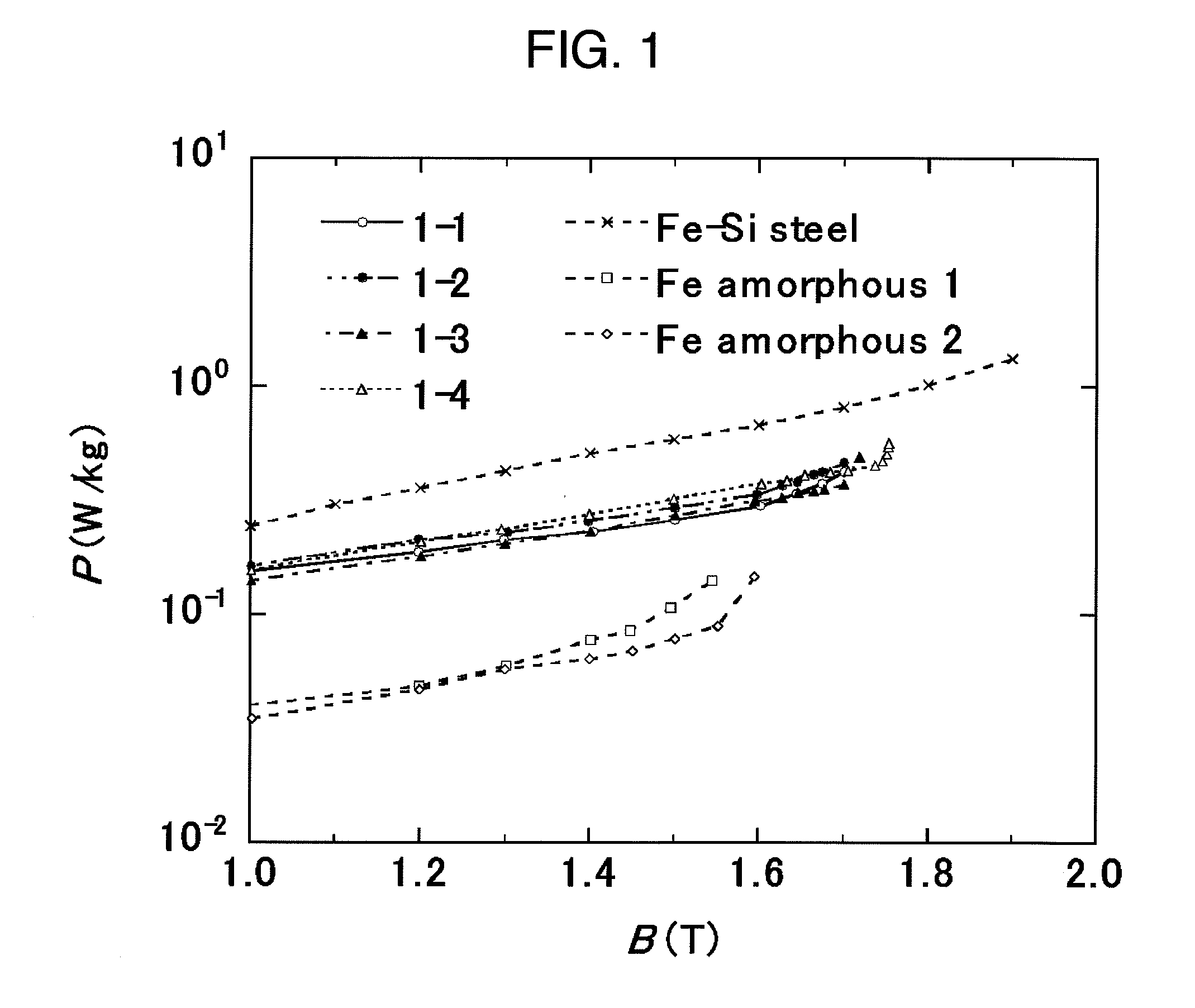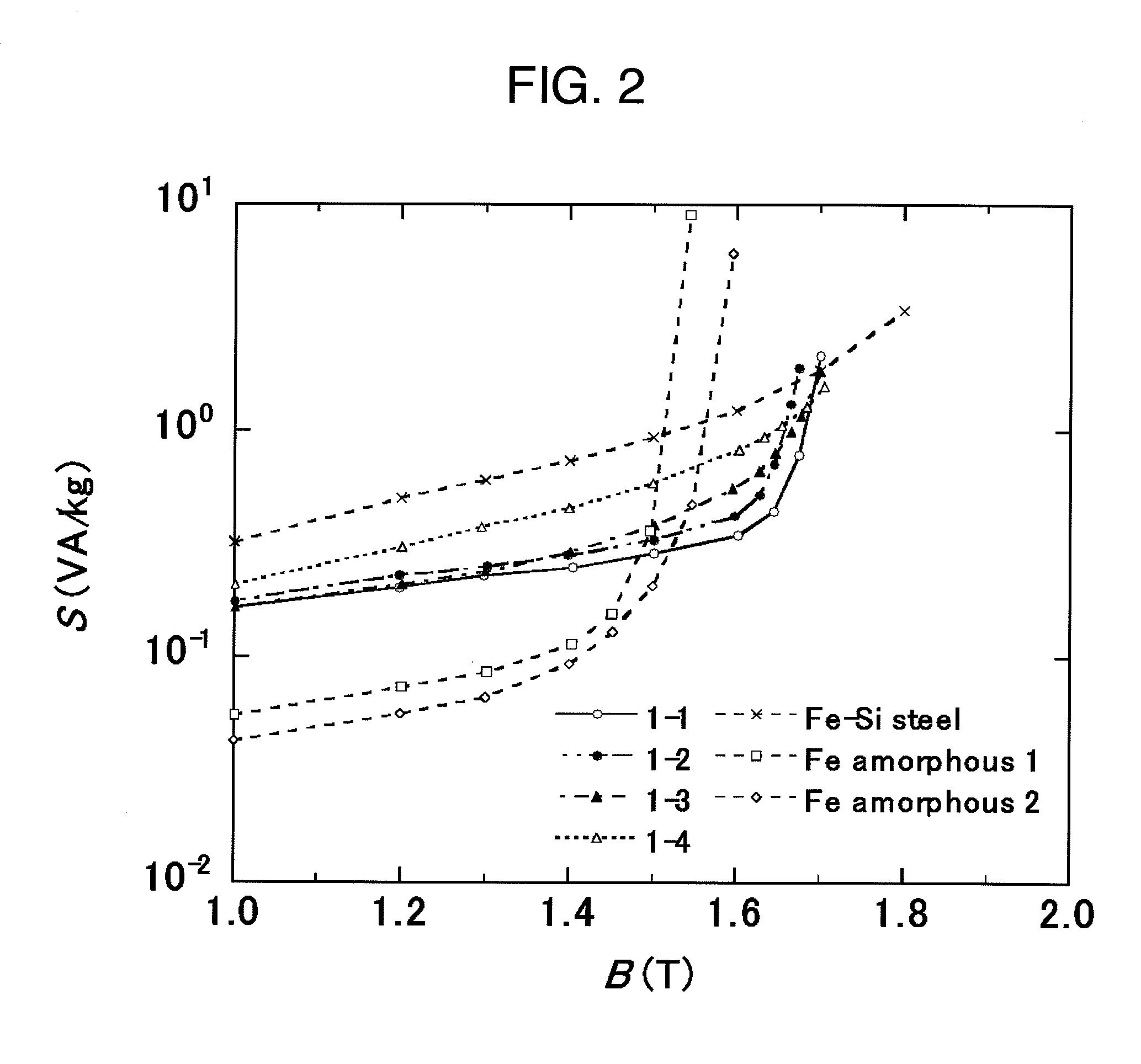Soft magnetic ribbon, magnetic core, magnetic part and process for producing soft magnetic ribbon
a soft magnetic ribbon and core technology, applied in the direction of magnetic bodies, cores/yokes, magnetic materials, etc., can solve the problems of low saturation magnetic flux density, difficult to process silicon steel sheets to thin sheets, large iron loss for high frequency applications, etc., and achieve high saturation magnetic flux density
- Summary
- Abstract
- Description
- Claims
- Application Information
AI Technical Summary
Benefits of technology
Problems solved by technology
Method used
Image
Examples
example 1
[0073]The ribbons, each having a width of 5 mm and a thickness of about 20 μm and each having the composition shown in Table 1 were prepared by a melt-quenching process using a single roll. The alloy ribbon was prepared by ejecting a molten alloy heated to 1300° C. onto a Cu—Be alloy roll having an outside size of 300 mm rotating at a peripheral speed of 32 m / s. As a result of an X-ray diffraction and transmission electron microscope (TEM) observation, it was found that the ribbon includes a structure dispersed in an amorphous phase in the volume fraction of less than 30%.
[0074]The ribbon was annealed so that the average rate of temperature rise at 300° C. or higher is about 200° C. / min or more. The ribbon was held at a holding temperature of 450° C. for 10 minutes, and then allowed to cool to obtain the soft magnetic ribbon of the present invention.
[0075]In each sample were present a crystal layer having a thickness of about 20 nm on the top surface of the ribbon, an amorphous laye...
example 2
[0077]The soft magnetic ribbon produced in Example 1 was used to measure apparent power. FIG. 2 shows the relation between the apparent power and the magnetic flux density of the soft magnetic ribbon of the present invention. Further, Table 2 shows the data on apparent power S1.55 / 50, S1.60 / 50, and S1.65 / 50 measured at conditions of 50 Hz and 1.55 T, 1.60 T, and 1.65 T, respectively, for the alloy compositions of the soft magnetic ribbons of the present invention (Examples 1-1 to 1-4). The data of a grain-oriented silicon steel sheet is also shown for comparison.
[0078]The soft magnetic ribbon of the present invention has apparent power properties better than those of Fe-based amorphous materials and grain-oriented silicon steel sheets in a wide region of magnetic flux density of about 1.55 T to 1.7 T. These results in combination with the results in Example 1 show that the soft magnetic ribbon of the present invention has particularly excellent soft magnetic properties in the region...
example 3
[0079]The soft magnetic ribbon produced in Example 1 was used to measure iron loss at a frequency of 400 Hz and 1 kHz. Table 3 shows the iron loss P1.0 / 400 and P0.5 / 1 k at 1.0 T and 400 Hz, and 0.5 T and 1 kHz, respectively, of the soft magnetic ribbons of the present invention and a grain-oriented silicon steel sheet. The difference of the iron loss between the inventive materials and the grain-oriented silicon steel sheet increases with increasing frequency, showing that the inventive materials are suitable for high frequency applications. Further, FIG. 3 shows the results of the magnetic flux density dependence of iron loss for each frequency, measured by using the soft magnetic ribbons in Examples 1 to 4.
TABLE 3Presence ofCompositionamorphousP1.0 / 400P0.5 / 1kName(Feature)layer(W / kg)(W / kg)Example 1-1Febal.Cu1.4Si5B13Yes2.63.6Example 1-2Febal.Cu1.4Si4B14Yes2.73.7Example 1-3Febal.Cu1.4Si3B12P2Yes1.91.6Example 1-4Febal.Cu1.35Si2B12P2Yes1.81.3Grain-OrientedFe—Si (230 μmt)No7.810.4silic...
PUM
| Property | Measurement | Unit |
|---|---|---|
| Grain size | aaaaa | aaaaa |
| Grain size | aaaaa | aaaaa |
| Temperature | aaaaa | aaaaa |
Abstract
Description
Claims
Application Information
 Login to View More
Login to View More - R&D
- Intellectual Property
- Life Sciences
- Materials
- Tech Scout
- Unparalleled Data Quality
- Higher Quality Content
- 60% Fewer Hallucinations
Browse by: Latest US Patents, China's latest patents, Technical Efficacy Thesaurus, Application Domain, Technology Topic, Popular Technical Reports.
© 2025 PatSnap. All rights reserved.Legal|Privacy policy|Modern Slavery Act Transparency Statement|Sitemap|About US| Contact US: help@patsnap.com



